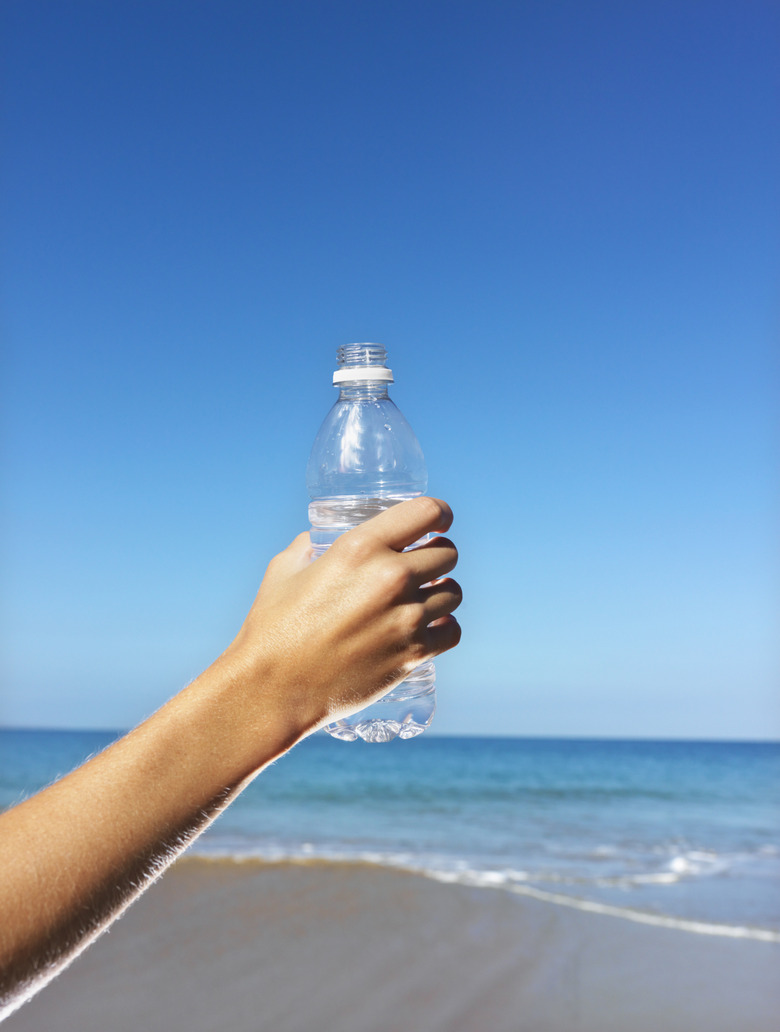How Is Bottled Water A Contributor To Global Warming?
In a crowded, industrialized world, bottled water presents two glaring ironies for ecologically minded people. They drink it to avoid polluted tap water, but evidence increasingly indicates that producing and transporting the recyclable plastic bottles that hold the water contribute significantly to global warming, and the bottles themselves are a significant source of new pollution. The second irony is that the bottles hold nothing more than purified tap water about half the time.
A Growing Concern
A Growing Concern
The International Bottled Water Association reports that Americans consumed 9.67 billion gallons of bottled water in 2012, which represents an increase of 6.2 percent from the previous year. The association also reports that 100 percent of the plastic bottles used by producers are made from polyethylene terephthalate, or PET, which itself is manufactured from recycled plastic. This creates the impression that no resources other than old bottles are needed to make new ones, but the reality is different. Bottled water consumption is increasing, and the National Resources Defense Council estimates that only 13 percent of plastic bottles are ever recycled.
Emissions From Manufacturing
Emissions From Manufacturing
The plastic bottles that aren't recycled end up in landfills or find their way into waterways and finally into the oceans, where they pose a long-term threat to marine life. Because few bottles are recycled, more must be manufactured, and the process releases a host of toxic chemicals, including acetone, methyl ethyl ketone and toluene, into the atmosphere. It also releases greenhouse gases, including sulfur oxides, nitrous oxides and volatile organic compounds. These global warming gases enter the atmosphere whether or not the manufacturing process uses recycled or new materials.
Emissions From Transportation
Emissions From Transportation
It isn't only the production of plastic bottles that consumes petroleum products and creates emissions; the bottles, when filled, must be transported from bottling facilities to their point of use. The NRDC estimates that in 2006 the transportation of bottled water to New York City from Western Europe released 3,800 tons of carbon dioxide. In the same year, the shipment of 18 million gallons of water from Fiji to California released an additional 2,500 tons. Producing the energy to keep the bottles cold for consumer use requires the combustion of fossil fuels and the release of additional greenhouse emissions.
Choose Filtered Tap Water
Choose Filtered Tap Water
The release of greenhouse gases that contribute to the warming of the atmosphere could be justifiable if the health benefits were unequivocal, but unfortunately, they aren't. According to Consumer Reports, 49 percent of the bottled water sold in the United States does not come from natural sources, such as underground springs, but from the tap. Moreover, if the water comes from a local source and is exempt from federal or state regulation, it is less likely to be pure than water from the municipal supply. The NRDC recommends installing a filter certified by the International Public Health and Safety Organization on your tap as a safe and ecological alternative to drinking bottled water.
References
Cite This Article
MLA
Deziel, Chris. "How Is Bottled Water A Contributor To Global Warming?" sciencing.com, https://www.sciencing.com/bottled-water-contributor-global-warming-22693/. 24 April 2017.
APA
Deziel, Chris. (2017, April 24). How Is Bottled Water A Contributor To Global Warming?. sciencing.com. Retrieved from https://www.sciencing.com/bottled-water-contributor-global-warming-22693/
Chicago
Deziel, Chris. How Is Bottled Water A Contributor To Global Warming? last modified March 24, 2022. https://www.sciencing.com/bottled-water-contributor-global-warming-22693/
